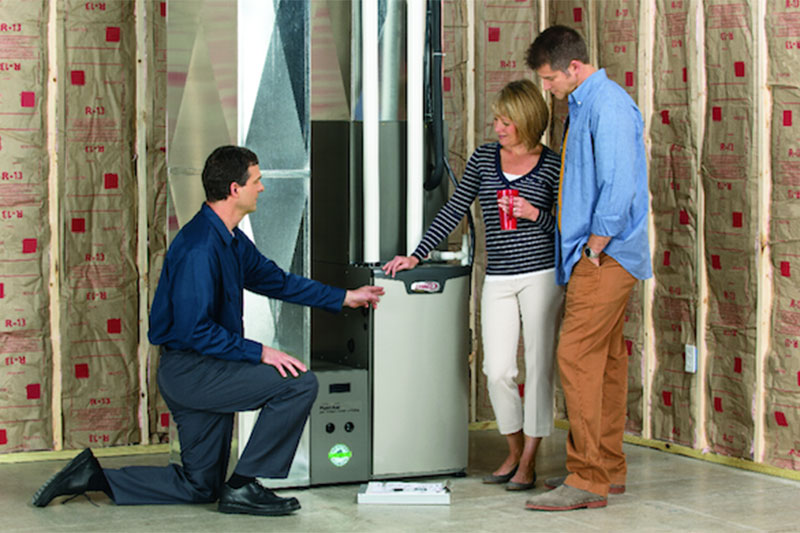
Natural gas furnaces need enough space and airflow to heat correctly.
Your furnace can shut down if it doesn’t have enough clearance. It also makes it difficult for our professionals to complete furnace repair.
Routine furnace maintenance is essential to keep your equipment operating well. A regularly serviced furnace may heat more efficiently, which could lower your utility costs.
Related: How Does Furnace Maintenance Impact the Energy Efficiency of Your Home?
Maintenance often helps us spot troubles before they begin. This could help lower future repair bills and potentially extend the life of your system.
So how much area should your equipment really have?
How Much Space Will a Furnace Take Up?
If you’re updating your basement or closing off your furnace room, you should consult manufacturer specifications and Sandpoint ordinances for clearance guidelines.
As a general rule of thumb, your system should be 30 inches away from furnace room walls on all sides. This lets our service technicians to conveniently work on it.
You also need to ensure the space has plentiful airflow and ventilation, especially if you have an outdated furnace with a metal flue.
Related: Furnace Service or Furnace Replacement: What to Consider
This model of furnace needs combustion air from the adjacent space. If there’s inadequate air, dangerous gas fumes and poisonous carbon monoxide could back draft into your home.
If your furnace is located in a tiny room with a gas water heater, you may need to install extra openings. This could include a fully louvered door or vents in the walls.
You don’t need to consider airflow and ventilation as much if you have a newer, high-efficiency furnace with PVC piping. Your system uses one pipe as an exhaust vent and the other to add air.
Keep Hazardous Items A Safe Distance from Your Furnace
Although furnace rooms are often also used for laundry and storage space, you should keep yours free of items that could be fire hazards.
This includes:
- Clotheslines
- Cleaning or laundry products
- Gasoline, paint or paint thinner
- Rags and papers
- Wood scraps and sawdust
- Used filters
If you have a cat, situate your litter box somewhere else. Cat urine contains ammonia, which could corrode your furnace’s heat exchanger. Plus, the furnace could move the stinky odors around your home.
You should also regularly sweep near your furnace to block dust from developing.
Related: Is it Time for Furnace Service or Replacement?
Request a Free Quote for Furnace Service
Whether you have to have furnace replacement or annual maintenance in Sandpoint, Age Heating & Cooling can expertly take care of your needs. Our highly trained technicians can repair any heating equipment model or brand.
Call us at 208-603-2210 or use our online scheduler to set up an appointment right away.







